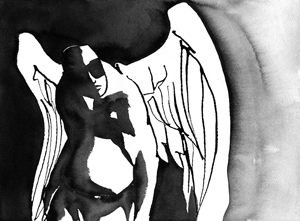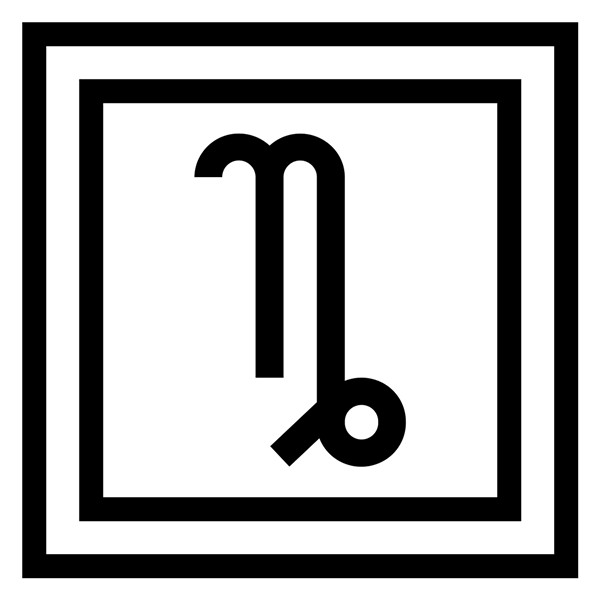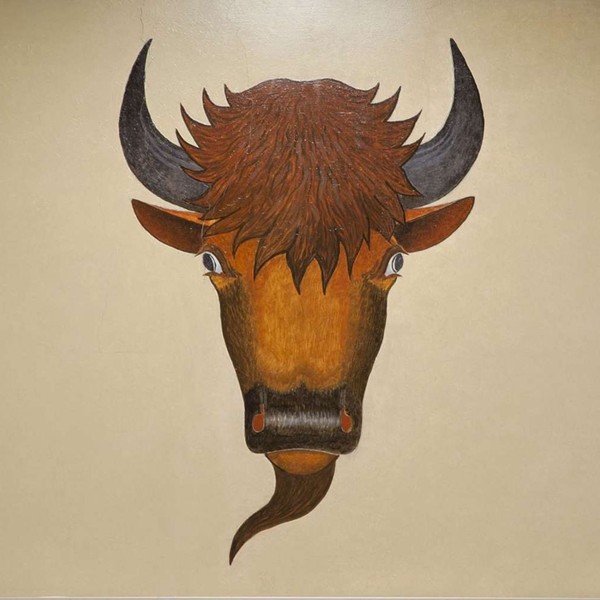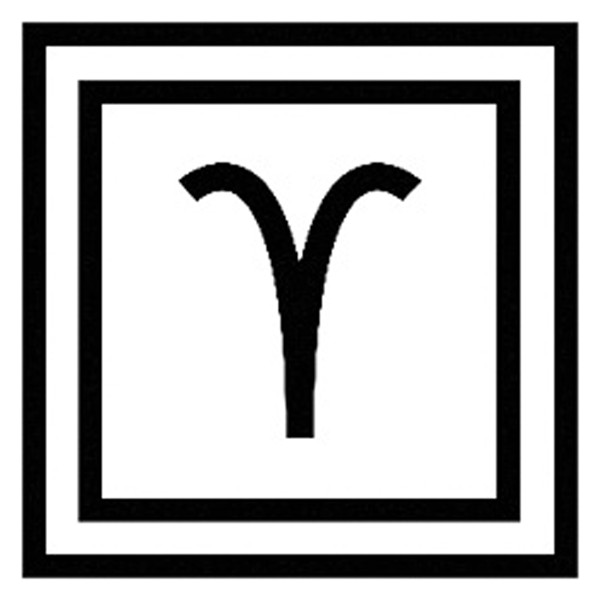“These questions have always prevented me from making long-term plans,” he wrote, due to his conviction that “the best approach to fulfilling possible futures is the discipline of keeping the attention rooted in the moment, with faith that the next step will become apparent if I am present here and now.”
He asked his readers to offer some ideas about this, and as Jason’s astrologer and that of Chronogram, I thought I would give it a try. These are very old issues, and many of our ideas about them are programmed with religious concepts. For example, the fate-versus-freewill discussion has been used as a cudgel in theology to address dumb questions like: If there is predestiny, are we programmed in advance to be saints or sinners and, therefore, is it set whether we’re going to heaven or hell? If so, why does it matter what we do?
(The answer is: It does not matter, as long as you go to church just in case and leave a little something in the basket. But don’t put that on your philosophy midterm.)
First, two observations about time. One involves our conception of linear time. An individual’s perception of time is usually based on a cultural model that we are given in childhood and that is reinforced throughout life, and it’s always related to technology. Our model is linear; time proceeds from the past to the future. Using this model, we exist in the present like a pair of socks hung on a clothesline, anchored to a tree in the past and the back porch in the future. Without a concept of the past (usually attached to traumatic or romanticized experiences) and the future (usually anchored in anxiety or hope), we would have no concept of the present. One slight problem is that we are hurtling toward the future but we can’t see it. It’s like driving down a highway staring into the rearview mirror.
As a result, our ideas about the present are derived from our mostly fictional ideas about the past and our entirely fictional ideas about the future. Imagine if our concept of time was rooted in the present and extended out in all directions (this is how astrology works). Our ideas are also based on our limited ideas about what birth and death are. Under this model, the tree is birth and the back porch is death; we think we exist for a span of time between the two, with no idea of what is beyond either. Presumably, if there is something “beyond” birth and death, we should have access to it now, if we are paying attention.
As an aside, most of our clocks are now digital. I’ve never seen a comment anywhere about what it means that we switched from circular clocks a generation ago to nearly all digital clocks today. Time became faceless with this gesture; clocks used to have a face. An analog clock at least presents a cyclical model of time; the hands go around and around in the context of a 12-hour cycle, in a way similar to how the Earth orbits the Sun. In a digital device, the sense of time as a line is emphasized; we move along the line like a tightrope walker and presumably we are always someplace new. A digital clock isolates the current time and takes time out of the larger cycles that really comprise it. Both analog and digital clocks offer models of sequential time, but they present two different pictures. Pictures mean a lot because they are connected to, and often shape, our concepts. Personally, I much prefer analog clocks and watches, and I use that option on my computers when I remember.
Second, our calendar system is poorly suited for measuring very long spans of time. Our system does not exactly fall apart when you go back 5,000 years, but it does not hold up well. If you say June 7, 3008 BCE, is that really meaningful? What happened that day?
The Mayans and other Mezzo-American cultures utilized a system of counting days (the Long Count) that was organized into cycles that could easily measure 26,000-year cycles. They were, we’re told, fond of the 5,125-year cycle (the baktun), and we are getting close to the end of one of those—I’ll get to this in a moment. The Mayans also used a 260-day cycle (the Short Count) that was like a floating island in time, moving through the centuries with day number 260 (and thus New Year) continuously falling in a different season. We have no convenient or conceptually coherent way to measure long spans of time. We can barely imagine 10 years in the future, and then one day a decade gets away from us. I think that our model of time is poorly suited for the effective use of it. It leaves us incredibly short sighted, something we cannot afford right now.
If we switch to an astrological (i.e., planetary) frame of reference, we can take advantage of a system that is based on the cycles of nature, not abstractions. This system has its problems too, but at least the model is elliptical. You get some context; you can relate time and space in a tangible way. You can see synchronicities, in the form of planets making aspects which come with key historical events that reveal the nature of the alignments. We may not know how or why this works, but I can tell you that if you look you can see it working; then you can try to figure out how, but this seems to matter less. (If this topic interests you, take a look at Cosmos and Psyche by Richard Tarnas.)
Until the discovery of Uranus, the longest cycle conveniently available was about 29 years—that of Saturn, which was traditionally considered the lord of time and also of death. When Uranus was discovered in the late 18th century, we were able to think in 84-year cycles. Pluto took us up to 250-year cycles in the early 20th century. Today we have Eris, which has a 557-year cycle; and we have Sedna, which has an approximately 12,000-year cycle. This is progress.
In 1977, Chiron was discovered with a 50-year orbit. This orbit is highly elliptical, so Chiron spends radically different lengths of time in different signs; this is one of its main uses. It reveals hidden patterns below the visible surface of reality that become plainly obvious when you study the patterns in someone’s biography.
Using these tools, it is possible to track the cycle of two planets—for example, the Uranus to Pluto cycle, which was very active in the 1960s as well as during many periods of revolution, and which will be active for the next seven years. This gives context; that is, it helps us find our location in the vast cycles of history and to assess the available energy of a particular time period. We can’t necessarily make exact predictions, but we can tell which of the big energies are working together, note the context and respond accordingly.
There are other ways to measure. One is using rare events, such as when a planet makes an exact conjunction to the Sun, called a transit. (The word transit has two meanings; the more common one is when any planet contacts any other planet [such as the Saturn return], and the other is used by astronomy, to which I’m referring here.) You may recall the Venus transit to the Sun from June 2004. There is a Wiki article that will confuse or clarify.
Conjunctions happen all the time, but it’s rare that they align in two different dimensions. In other words, during a typical conjunction between Venus and the Sun, Venus will pass a little above or below the Sun. During a transit, Venus will cross the disk of the Sun. This happens at precise intervals. According to the very cool Wikipedia page on the topic, “Transits of Venus are among the rarest of predictable astronomical phenomena and currently occur in a pattern that repeats every 243 years, with pairs of transits eight years apart separated by long gaps of 121.5 years and 105.5 years.”
The transits come in pairs, just like eclipses. Individual events in each pair are usually separated by eight years. The event corresponding to the June 2004 transit occurs in June 2012. This is interesting because the Mayan astronomer/astrologer/priests for whatever reason chose 2012 as the end date for the 13th baktun—and they loved the cycle of Venus. So this correspondence cannot be a “mere” coincidence—it is either a synchronicity or the result of careful planning.
We are approaching the exact midpoint of the 2004 and 2012 events. The events are separated by 2,920 days, and the midpoint between them is Saturday, June 7, 2008.
This event occurs with the Sun and Venus in Gemini, precisely in the midst of Mercury retrograde in Gemini. Note: It is not a transit of Venus, but with the Sun, Mercury, and Venus clustered around the North Node of Venus (right where the 2004 and 2012 transits occur), this is a pretty special event. It seems to be a kind of tipping point on the way to whatever this elusive thing we’re calling 2012 represents, and whatever Venus represents.
Now, you may ask how being aware of an event like this helps shape our concept of time, or helps us make better use of time. I would remind you that such an effort is only meaningful if you step outside the context of your daily grind. It’s only meaningful if you seek meaning, and want to see your life as meaningful and part of some larger process. Unfortunately, for most people this is no more useful than going to a movie. If you want to access the subtler realms of psychic and temporal influence and really feel the contours of time, you need to think about it for a lot longer than it took you to read this article. Indeed, you need to involve yourself with the process every day in some way, and be willing to shake up your old constructs of time and space.
However, it can be truly helpful to use cycles that stand outside the normal week/month/year measurement pattern as part of a reflection process. One simple exercise could be to make a detailed assessment of where you were at in the spring of 2004 and where you are today. Use that to conjure some visions for where you want to be in 2012. One immediate benefit is that it’s possible to consider the four-year span of time between ‘04 and now. We actually remember some of what happened that recently, and we have some sense of how we filled the time and what it felt like to live that long. Between the June 2004 transit and the midpoint, you lived 1,460 days.
The thing to remember is that these are not ordinary dates. June ‘04, ‘08 and ‘12 are hot spots; they are nodal points where many paths in a complex model of time converge in something akin to a cluster of exit and entrance ramps along a freeway. You’re still driving down a highway and the wheels are still humming against the pavement. You don’t have to do that much. But you have options that don’t normally exist: there are unusual points of access and egress in the vicinity. And it happens in the midst of a very interesting, seemingly routine cosmic shuffle known as Mercury retrograde, which will add to the sense of intrigue and perhaps help you loosen your grip on this tightrope of time that we refer to as reality.



















